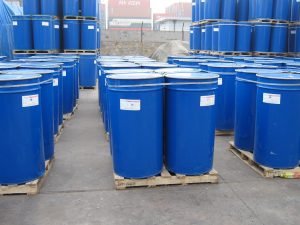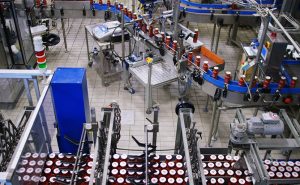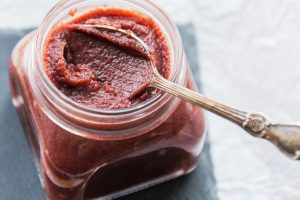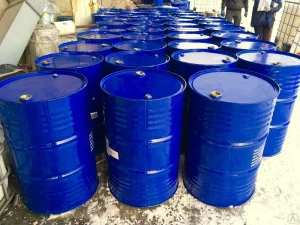Tomato paste is a food condiment that is used all over the globe as a source of coloring and flavor in a broad variety of dishes, including stews and broths. It is considered to be a significant culinary ingredient. Some people believe that homemade tomato paste is healthier than the kind that comes in cans. However, due to the specific operations that are done during the production of tomato paste, all of the nutrients are kept saved in it, and it is completely healthy. A high-quality tomato paste must comply with specific standards.
Tomato paste is a condiment made from concentrated tomatoes, but it is also a key component in many sauces and jams. Because it is rich in an antioxidant known as lycopene, tomato, which is the primary component of tomato paste, helps the body fight against cancer, premature aging, and heart disease that are all caused by free radicals.
There are tomato product manufacturers around the world including USA, Asia, and Europe. They sell the products on big scales, in drums and other kinds of packaging, with different prices depending on the product specifications like Brix number, and whether it is a hot break or cold break, to wholesalers.

Tomato paste manufacturers
There are top tomato paste manufacturers including Iran, China, the USA, and Italy in the world; these countries can supply the world with tomato paste because of their geographical and environmental Conditions suitable to grow tomatoes throughout the year. They can meet any demands for tomato paste; the lowest price with the lowest Brix, a numerical value showing the thickness of the paste, and the highest Brix with a different price.
Some tomato paste manufacturers certify tomatoes they grow on their own farms, having specific standards There are reliable tomato paste brands manufactured in these countries, which are very active in selling tomato paste to the world; tomato paste manufacturers produce tomato paste under their customers’ brand names; even with their own names, tomato manufacturers are well-known around the world; since their names have been seen a lot everywhere like online shops, on the shelves in stores.

Tomato paste manufacturers in usa
Among tomato paste manufacturers, there is the USA. There is a good demand for tomato paste produced in the USA; to keep their status in the global market for tomato products, tomato paste manufacturers are continually working to develop their company, boost their quality, and produce sustainable pricing by using new creative technologies, economies of scale, and vertical integration. In addition, they are working hard to improve the quality of their products. Some American manufacturers are Heinz and Hunts.
Hunts have a pleasant tomato taste that is unaffected by the presence of water. Not very sugary, and not overly sour either. The production of HEINZ tomato paste is regulated in accordance with the USDA Class A tomato paste Identification Standards. It is never given an artificial pH or given any salt, and none of those things are ever done. The tasty tomato products offered by HEINZ are an ideal choice for nearly any kind of catering need.

Hot break tomato paste
Tomato paste obtained by hot break technology is called hot break tomato paste.The word “hot break” refers to the process of slicing fresh tomatoes at temperatures between 85 and 100 degrees Celsius, while the term “cold break” refers to the process of slicing fresh tomatoes at temperatures between 65 and 75 degrees Celsius. The apparent viscosity, which is measured in centimeters of Bostwick, is what differentiates these two items from one another.
According to Bostwick, the viscosity of Hot Break goods ranges from 3.5 to 6 centimeters on average, whereas the viscosity of Cold Break products ranges from 9 to 16 centimeters on average. Hot Break products are denser and more viscous as a result of their higher viscosity. This method is suitable to produce sauces and ketchup. The hot break may result in the unfavorable color of the tomato paste; it is not done on high-quality tomatoes. Hot break tomato paste is lower in price than the cold one, but it is more economical since it is already heated and thick. It tastes like a well-cooked tomato.

Tomato paste specification
Concentration limits for tomato paste vary from a minimum of 7 percent for tomato puree all the way up to a minimum of 36 percent for triple concentrate. These values are expressed as a percentage of the product’s dry matter. The product must be manufactured using naturally occurring soluble solids that are derived from substantially intact ripe red tomatoes (Lycopersicon/Lycopersicum esculentum P. Mill). These tomatoes must then be filtered or otherwise prepared to remove the majority of the skin, seeds, and other roughness that are present in the final product.
Both genetically modified organisms (GMOs) and radioactive residues or components are prohibited from being present in any product. It is not allowed to include any compounds of the microbiological origin or any other poisonous or dangerous substances, such as anti-nutritional factors, heavy metals, pesticide residues, or toxins, in proportions that might potentially pose a threat to the consumer’s health. The results of an analysis of the product must establish that it is “fit for human consumption” if it is tested for microbes, chemical pollutants, toxins, heavy metals, and pesticide residues. The proper laboratory reports and declarations are required to be submitted by the suppliers.

Tomato paste in drums
Being sold on a big scale, tomato paste is packed in drums. Bulk buying usually involves purchasing a large number of items at a lower unit price. These economies of scale are a cost advantage for importers and wholesalers. The ability to buy in bulk is very useful for the food industry. This allows them to purchase food ingredients at a lower cost, making their prices attractive to consumers while maintaining a healthy bottom line for the finished product. Tomato paste can be packed in metal drums, and packed in aseptically sealed bags.
The net weight of each drum is between 200 and 250 kg on average. This is the most effective method for packaging this kind of good so that it can be moved and stored with ease. Drums made of metal protect the product from being damaged, while sterile bags ensure that the product retains its original quality. They offer significant savings in space as well as shipping and storage costs. Tomato paste is in high demand, and countries all over the globe, including the United States of America, Iran, Italy, and China, all produce their own versions of the product.

Since there is a lot of competition in the market for tomato paste, companies who create it work hard to ensure that their goods can satisfy a variety of consumer requirements while also adhering to industry standards for tomato paste specifications. A high-quality tomato paste has to fulfill certain requirements, such as having a specified level of Brix, being free of potentially harmful ingredients, and being produced from organic tomatoes. Tomato paste is available for purchase in drums for wholesale.









Your comment submitted.